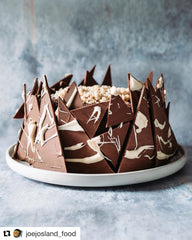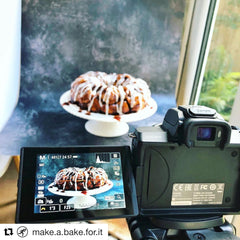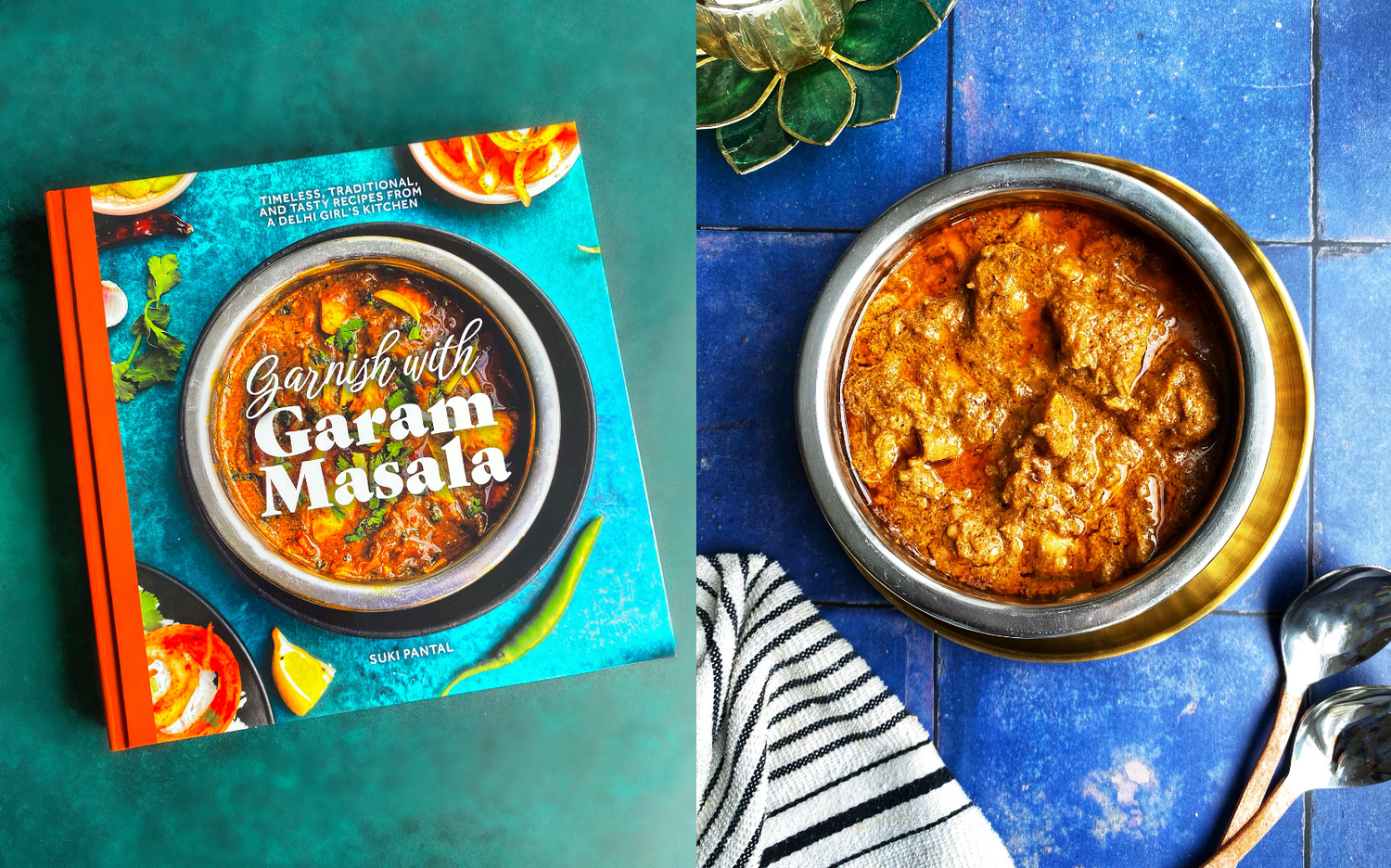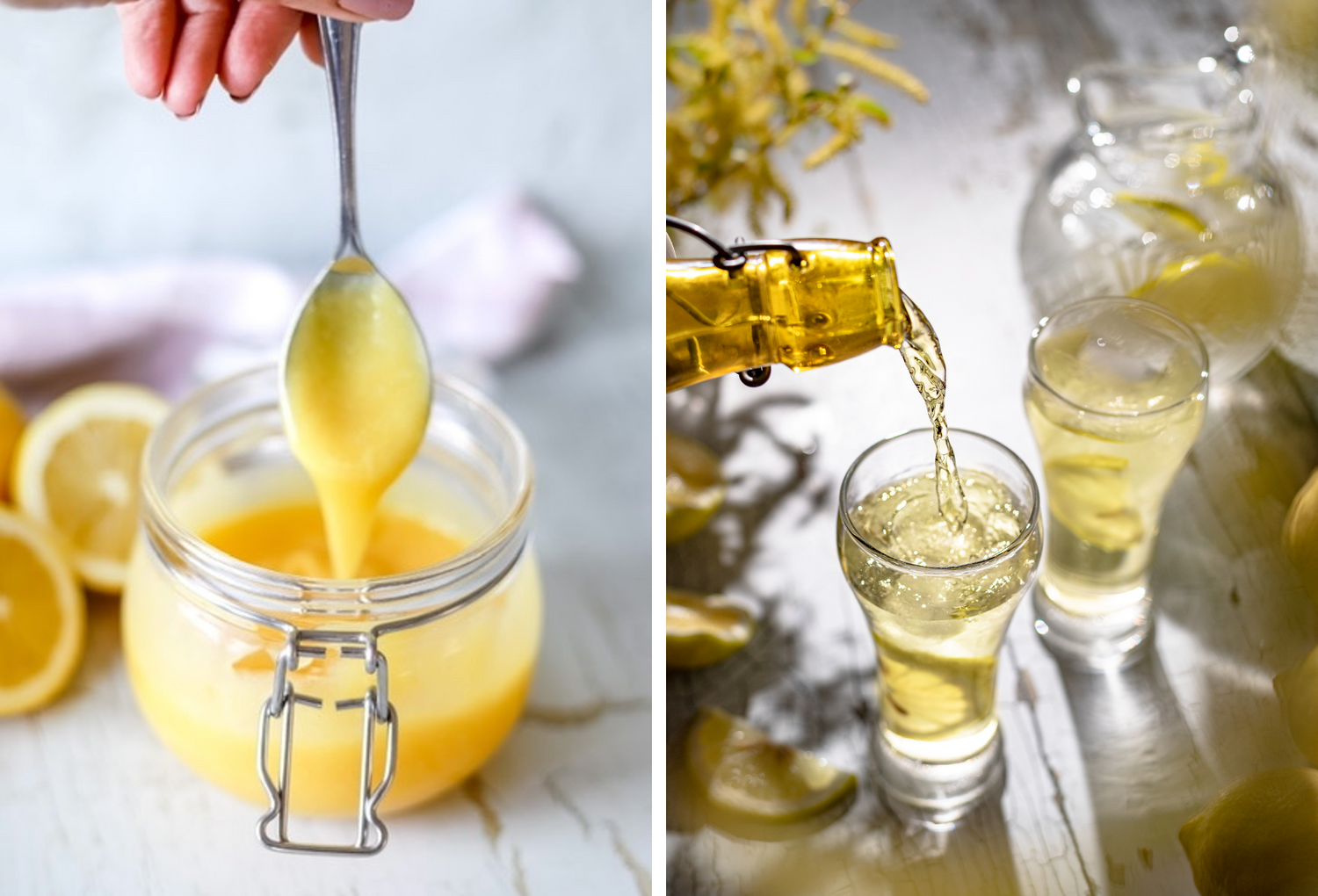Feature image shot using the Salt backdrop as an infinity curve
Hi! I've been shooting with infinity curves quite a bit lately and have started noticing them more - to good and bad effect - in others photography too.
They're not the most natural way to style, and they have their limitations, but infinity curves can work well when you play to their strengths, and they offer a really cheap and easy set up, so I wanted to explore the subject and get some tips together for you guys.
Because you might be thinking ‘what the heck is an infinity curve?’ lets’ start with that…
In short, an infinity curve (or cove, or scoop) is created by using a single surface to create the floor and wall of your set, in a fluid curve. Infinity curves are often permanent fixtures, built and painted in large studios for fashion, interiors and car photography, but they can be used to equally good effect for still life and product photography on a smaller scale, using curved paper, card or canvas as a temporary set up.
The defining feature of an infinity curve is the lack of joins. As there aren’t any corners or hard angles on an infinity curve, shadows don’t gather and there is no contrast between surfaces creating a horizon and often unintentional leading-line across your composition.
So why would you use an infinity curve for food or still life photography?
Good question! As usual it’s down to the creative direction and your personal preference, so I will try to encapsulate the essence of what an infinity curve brings to an image rather than tell you why it’s good (because it won’t be good for everything).
Infinity curves create a minimal, stylised, sometimes ethereal look. They are best suited to straight-up product photography rather than lifestyle briefs that normally require a more natural look; sets that convey home life.
Using one backdrop surface instead of two or a full set or lifestyle scene already minimises the colours and elements of your styling. The lack of shadows and line-break also keeps the look clean and simple. This can all aid in creating a strong focal point.
Deciding to use an infinity curve puts the image feel in the vein of editorial, graphic, clean. If you need to run copy or graphics over your image an infinity curve can be very useful as you won’t have so many joins or harsh shadows to avoid clashing with.
Other benefits to using an infinity curve – especially for the home photographer – is that they are cheap (reduced number of props), quick to set up and require a relatively small amount of space (kitchen countertop against the wall is perfect or on a table use a stack of books or MacBook like I have below!) while easily hiding everything else around your set.
Sounds dreamy doesn’t it? And it is.
HOWEVER, there are some things to consider that can really make or break the overall effect of an infinity curve set up.
5 considerations when using an infinity curve for still life photography and food styling
Selecting your backdrop
Obviously to create an infinity curve you’re going to need a flexible backdrop –paper, PVC, canvas will all work fine but the stiffer and evenly weighted ones (like our reinforced paper sheets) will work best as they won’t dip or warp creating odd shadowing.
Now as we have already mentioned – an infinity curve is not used to mimic a lifestyle setting, the decision has already been made that this will be a stylised product/editorial shot, so with that in mind you will be looking for a backdrop that has subtle, abstract qualities, ideally in a similar shade and colour across the entire design so we don’t destroy the feeling of infinite continuation across the image.
Wooden planks, tiles, marble etc effects won’t work for this as 1, they’re too literal and 2, things like that don’t bend in real life, so it’s just all wrong!
Here are 4 of our photography backdrops that work beautifully as infinity curves.
Bridge weathered grey photography backdrop, Salt rough plaster effect photography backdrop


Rum darl grey photography backdrop, Kai teal effect photography backdrop


i
Choosing the right angle
The best camera angles for shooting with an infinity curve are low and straight on to your subject – think eye level to it.
Firstly this will reduce how much of the curved area we see (the hardest place to control the light), and secondly it means we can pull the subject right to the front of our set leaving lots of room behind, helping us to drop the focus.
Shooting straight on at the height of your subject has a similar effect to looking down overhead (90degrees higher) as it (very simplistically put) reduces the image to 2 dimensions the same way shooting flatlay does. However, from straight on we can play with the depth much more easily – moving props to the front or back of the set - and use the distance between to create layers and interest with the focus.
Because of this low angle taller subjects will do better - burgers, cakes, drinks, candles, vases - as they will fill up more of the image than say a flat plate of food which will go very slither like at a low angle.
This is another element that leads to a more graphic composition, showcasing clean silhouette shapes from your props.
Shot on the Slay cool grey concrete look backdrop


Focal depth
When used as an infinity curve the backdrop is a much more subtle prop, creating a background of soft colour and image-wide graduated shadows rather than a clearly defined texture with its own light and shade to bring to the mood.
Infinity curves work really well when allowed to drop out of focus as much as you like and/or your lens will allow.
If in doubt start at F5 and reduce from there. If shooting on a phone switch to portrait mode to blur out the background
Lighting
Infinity curves can work for light and bright photography or dark and moody styling, it’s up to you but I would say if you are new to photography go with dark backdrops for moody styling and light ones for bright styling – its harder to work it the other way round and can easily look poorly lit.
For darker moods you will need to flag (block) the light hitting the back wall of your infinity curve, perhaps from the one side where the light is coming from, maybe both sides and on top, play around with it. Black card or foamboard is perfect for this – fold it so it stands if needed.
You will also notice – more so on darker backdrops – that the curved section of the infinity curve reflects the most, this can be softened with flags, by difussing the light or with cleverly placed props!
Here's how i got to the final lighting set up after trying a few options on this shot -


The first adjustment was to simply turn away from the light source


Then i added some black card to flag/block the light off the backdrop and eventually a diffuser. I also added more vertical black card to the right directly opposite the one on the left at the back of the curve.
Shot on the Powder dark steely blue photography backdrop
i
Styling
It’s entirely up to you how you style and frame your image, but bear in mind the points above and how they all pull together to lend themselves to an arrangement that is simple, graphic & editorial – your creation could be subtle or punchy, moody or pretty, but it will definitely be stylised and product-led rather than lifestyle looking.
Because of the tendency for shorter focal depths infinity curves work great with macro food photography and tight still life crops - ideal for Instagram shots.


When you play to the strengths of the infinity curve it’s definitely worth a go!
Here's how some of our talented customers have used our photo backdrops as an infinity curve - notice how most of them are cakes as they're a taller food?




I hope you enjoy trying something new! Or maybe this has bought to light some things you’ll want to change when you shoot with an infinity curve next?
I'd love to hear your thoughts and see your creations - please comment below and add your Instagram account so I can take a look!
Happy styling! Sophie

Image by @deadlyXdelish using the Petra photo backdrop







4 comments
A very interesting article and you covered lots of areas.
Thanks for this informative article. I received one as a present recently and had no idea how to start. Mine is a cube minus the front which folds flat for storage. It has a shiny silver interior and several double sided coloured cards which create the infinity curve. The cards are all shiny which confuse me as I don’t know how to limit the shine. It also has a light ring at the top which I don’t know how to use. I’m thinking of buying some matt black card to start with. HELP!
Thanks for this. Really helpful to see pictures of set ups. I’ve tried it in the past but struggled to minimise the light bouncing off the curve. Will have to have another play and see if I can get rid of that distracting band of light!
Thanks a lot for such a great article. this is so useful to me, I am looking forward for many such wonderful articles from you.